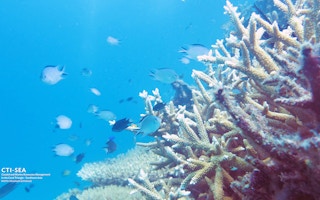The world is slipping away – 3 degrees Celsius at a time.
It is clear that climate change is occurring. To tackle it, world leaders and scientists have agreed that we need to limit global average temperature rise to 2 degrees Celsius over the next century. Yet, the planet remains on a trajectory to experience an increase of 3 degrees C.
Such a temperature rise will likely see a momentous drop in food production, an increase in heat waves, acceleration in sea level rise, and more droughts, wildfires, and floods.
Despite the dire situation, there are glimmers of hope.
As President Barack Obama has said, “We are the first generation to feel the effect of climate change and the last generation who can do something about it.”
But, we need to act fast. According to a recent study published in the journal Nature in 2013, the point of no return is approaching. By 2050, 5 billion people may face extreme climates, and heightened competition for natural resources may trigger violence and instability.
Asia will likely be hit the hardest, as it is at greatest risk from climate change. The most vulnerable are poor people living in the low-lying river deltas of Bangladesh, India, Vietnam, and China.
Perhaps we are just reaping what we sow.
Four out of the world’s top 10 carbon emitting nations are from Asia, and the region is now responsible for 35 per cent of worldwide energy-related carbon dioxide emissions, compared to 17 per cent in 1990.
Our region is also among the most susceptible to disasters usually associated with environmental degradation. If the rate of increase of CO2 continues its current trend, the number of disasters in Indonesia, Thailand and Philippines is expected to increase and it is estimated that there will be one more annual disaster every 20 years.
It is increasingly apparent that Asia’s rapid development – accounting for 40 per cent of global economic output and 2/3 of global growth - is taking a toll on our region’s species and ecosystems.
Rates of wetland, mangrove and forest loss are among the highest in the world; 95 per cent of Southeast Asian coral reefs are at risk; and more than 1,400 plants and animals in the region are listed as Critically Endangered.
Thankfully, the solution to many of Asia’s challenges can be provided by diverse, well-managed and functioning ecosystems. When nature’s support system is healthy, societies become more resilient.
We must understand that development and nature can – and must – work harmoniously together. We need to debunk the “nature vs. progress” myth by giving nature its due credit and providing it with more opportunities to contribute to human progress and well-being.
With the adoption of the Paris Climate Agreement in December 2015 and the 2030 Agenda for Sustainable Development in September 2015 — which includes 17 Sustainable Development Goals (SDGs) — the world has clearly come to a consensus on the need to curb emissions and boost climate-resilient growth.
“
Thankfully, the solution to many of Asia’s challenges can be provided by diverse, well-managed and functioning ecosystems.
The Paris Agreement has set a long-term goal to hold global average temperature rise to well below 2°C above pre-industrial levels, and to pursue efforts to limit it to 1.5°C. And the SDGs have set a precedent for the entire world to move toward a more resilient and sustainable future.
To achieve this, we need to reduce our global emissions swiftly while at the same time increasing our capacity to address the adverse impacts of climate change.
Here at IUCN, we believe that interventions that use nature and the natural functions of healthy ecosystems can help tackle some of the most pressing challenges of our time. These types of nature-based solutions not only help to protect the environment but also provide numerous economic and social benefits.
Mangrove forests, for example, provide a more effective and cost-efficient buffer from storm surges and tsunamis than man-made dykes. Mangroves are also a fundamental asset in the battle to reduce carbon emissions, as they have the ability to absorb very large amounts of CO2.
Mangroves for the Future, a partner-led initiative that is co-chaired by IUCN and UNDP and implemented in India, Indonesia, Maldives, Seychelles, Sri Lanka, Thailand, Bangladesh, Cambodia, Myanmar, Pakistan and Viet Nam, has demonstrated what can be done.
By building a collaborative platform for multiple stakeholders to work together locally, nationally and regionally, and by promoting investment in coastal ecosystems as a form of natural infrastructure, Mangroves for the Future has shown that nature-based solutions can effectively support sustainable development.
As the challenges become more severe, both the public and private sectors are becoming more receptive to holistic, nature-based solutions. The private sector, in particular, needs to step up and use nature’s infrastructure sustainably in their business practices. Nature-based solutions can, after all, also help to create new jobs and economic growth.
As a union composed of government bodies and NGOs, working with conservation experts, IUCN helps make dialogues surrounding ‘nature-based solutions’ happen. This September 1-10 in Hawai’i, IUCN is convening all these sectors on a neutral platform to discuss ways to enhance the resilience of people and nature.
Simply put - without nature, there is no growth. Sustainability, well-being, and economic growth go hand in hand. To win the race against time, all sectors of society need to converge and tread the path of this new paradigm – working with nature and not against it – and become a forerunner in the fight against climate change.
Aban Marker Kabraji is regional director, IUCN Asia.











